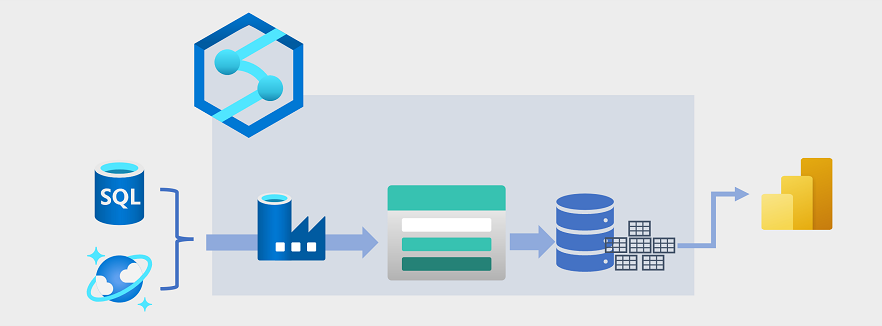Use Azure Data Lake Storage Gen2 in data analytics workloads
Azure Data Lake Store Gen2 is an enabling technology for multiple data analytics use cases. Let's explore a few common types of analytical workload, and identify how Azure Data Lake Storage Gen2 works with other Azure services to support them.
Big data processing and analytics

Big data scenarios usually refer to analytical workloads that involve massive volumes of data in a variety of formats that needs to be processed at a fast velocity - the so-called "three v's". Azure Data Lake Storage Gen 2 provides a scalable and secure distributed data store on which big data services such as Azure Synapse Analytics, Azure Databricks, and Azure HDInsight can apply data processing frameworks such as Apache Spark, Hive, and Hadoop. The distributed nature of the storage and the processing compute enables tasks to be performed in parallel, resulting in high-performance and scalability even when processing huge amounts of data.
Data warehousing

Data warehousing has evolved in recent years to integrate large volumes of data stored as files in a data lake with relational tables in a data warehouse. In a typical example of a data warehousing solution, data is extracted from operational data stores, such as Azure SQL database or Azure Cosmos DB, and transformed into structures more suitable for analytical workloads. Often, the data is staged in a data lake in order to facilitate distributed processing before being loaded into a relational data warehouse. In some cases, the data warehouse uses external tables to define a relational metadata layer over files in the data lake and create a hybrid "data lakehouse" or "lake database" architecture. The data warehouse can then support analytical queries for reporting and visualization.
There are multiple ways to implement this kind of data warehousing architecture. The diagram shows a solution in which Azure Synapse Analytics hosts pipelines to perform extract, transform, and load (ETL) processes using Azure Data Factory technology. These processes extract data from operational data sources and load it into a data lake hosted in an Azure Data Lake Storage Gen2 container. The data is then processed and loaded into a relational data warehouse in an Azure Synapse Analytics dedicated SQL pool, from where it can support data visualization and reporting using Microsoft Power BI.
Real-time data analytics

Increasingly, businesses and other organizations need to capture and analyze perpetual streams of data, and analyze it in real-time (or as near to real-time as possible). These streams of data can be generated from connected devices (often referred to as internet-of-things or IoT devices) or from data generated by users in social media platforms or other applications. Unlike traditional batch processing workloads, streaming data requires a solution that can capture and process a boundless stream of data events as they occur.
Streaming events are often captured in a queue for processing. There are multiple technologies you can use to perform this task, including Azure Event Hubs as shown in the image. From here, the data is processed, often to aggregate data over temporal windows (for example to count the number of social media messages with a given tag every five minutes, or to calculate the average reading of an Internet connected sensor per minute). Azure Stream Analytics enables you to create jobs that query and aggregate event data as it arrives, and write the results in an output sink. One such sink is Azure Data Lake Storage Gen2; from where the captured real-time data can be analyzed and visualized.
Data science and machine learning

Data science involves the statistical analysis of large volumes of data, often using tools such as Apache Spark and scripting languages such as Python. Azure Data Lake Storage Gen 2 provides a highly scalable cloud-based data store for the volumes of data required in data science workloads.
Machine learning is a subarea of data science that deals with training predictive models. Model training requires huge amounts of data, and the ability to process that data efficiently. Azure Machine Learning is a cloud service in which data scientists can run Python code in notebooks using dynamically allocated distributed compute resources. The compute processes data in Azure Data Lake Storage Gen2 containers to train models, which can then be deployed as production web services to support predictive analytical workloads.